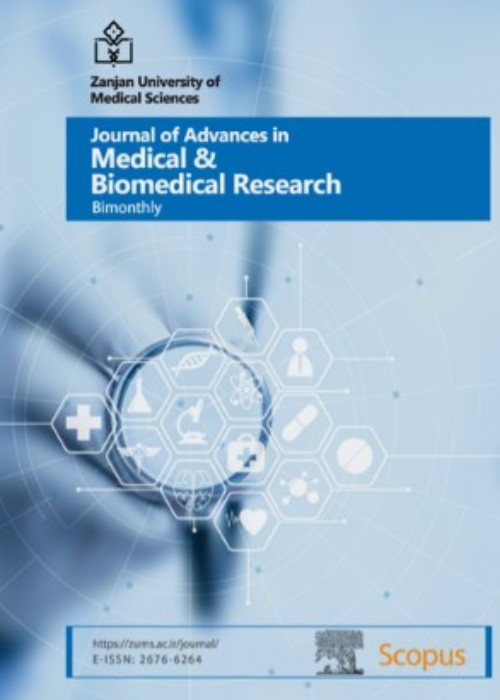Biodegradation of the Soils Polluted with Ethyl Benzene, Toluene and Naphtalene
Author(s):
Abstract:
Background and Objective
Aromatic hydrocarbons are produced by incomplete combustion of fossil fuels and pollute the soil following the emission into the atmosphere by precipitation. Numerous studies suggest that microbial inoculation has contributed to biodegradation of aromatic hydrocarbons. However, other studies have not confirmed the efficacy of this procedure in biodegradation. Regarding the contradictory findings, this study was conducted to evaluate capability of microorganisms isolated from oil-polluted soils in biodegrading aromatic hydrocarbons through separate or mix culture in Zanjan in 2004. Materials and Methods
In this experimental study naphthalene, toluene and ethyl benzene were used as aromatic hydrocarbons indexes. These substance, as the sole source of carbon were added to the soils which had been inoculated with microbial colonies isolated from polluted areas and four months later microbial count was performed as microbial activity index. The extent of biological and non-biological removal of substances was assessed through gas chromatography procedure and the results were analysed by Mann-Whitney test. Results
Mean colony counts in which toluene, ethyl benzene and naphthalene had been used as the sole carbon source were 19.7×106, 69.4× 105 and 41.2×106 colony/gr. soil respectively. In the culture containing a mixture of three hydrocarbons the number of colonies was 34×106 in one gram soil. The percentages of biodegradation for three studied hydrocarbons which had been exposed to microorganisms separately were 51, 45 and 69 for toluene, ethyl benzene and naphthalene respectively and when the mixture of the substances was added to the media culture the percentages of removal were 80.1, 65.7 and 63.6 for naphthalene, ethyl benzene and toluene respectively. Conclusion
Aromatic hydrocarbons are biodegradable by isolating microbial population from oil-polluted soils and preparation of inoculation liquid. Since evaporation is an appropriate method in removal of hydrocarbons, soil rehabilitation through aeration together with microbial inoculation seems a proper method for removal of soil aromatic hydrocarbons.Keywords:
Language:
Persian
Published:
Journal of Advances in Medical and Biomedical Research, Volume:14 Issue: 54, 2006
Page:
17
magiran.com/p403753
دانلود و مطالعه متن این مقاله با یکی از روشهای زیر امکان پذیر است:
اشتراک شخصی
با عضویت و پرداخت آنلاین حق اشتراک یکساله به مبلغ 1,390,000ريال میتوانید 70 عنوان مطلب دانلود کنید!
اشتراک سازمانی
به کتابخانه دانشگاه یا محل کار خود پیشنهاد کنید تا اشتراک سازمانی این پایگاه را برای دسترسی نامحدود همه کاربران به متن مطالب تهیه نمایند!
توجه!
- حق عضویت دریافتی صرف حمایت از نشریات عضو و نگهداری، تکمیل و توسعه مگیران میشود.
- پرداخت حق اشتراک و دانلود مقالات اجازه بازنشر آن در سایر رسانههای چاپی و دیجیتال را به کاربر نمیدهد.
In order to view content subscription is required
Personal subscription
Subscribe magiran.com for 70 € euros via PayPal and download 70 articles during a year.
Organization subscription
Please contact us to subscribe your university or library for unlimited access!


